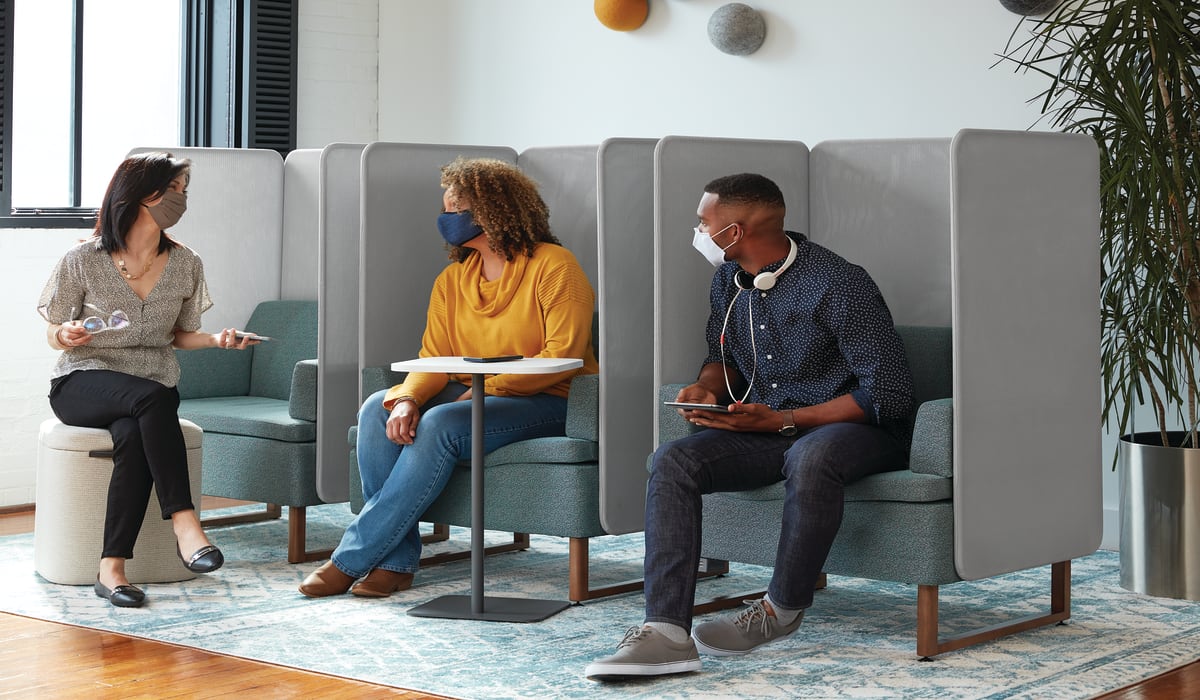Latest From HON
STAY IN TOUCH
Sign up to receive inspirational updates related to product enhancements and the latest workplace trends.

Nothing is more important than your health.
In our recent Think Space blog, we talked about setting goals and being ready for whatever 2021 has in store. A big part of reaching or achieving those goals is wellness, and when it comes to the workplace, that’s a multi-faceted topic.
Sure, your company may have a workplace wellness program in some form or another. But are you communicating with employees about the different ways in which they can take control of their health and well-being at work?
Physical and mental wellness, combined with a renewed commitment to managing dependence on technology, are three key components of improved workplace wellness.
According to the Future Workplace Wellness study, 70% of respondents said that a workplace focused on their health and well-being would make them more likely to accept a new job or keep the job they have.
A holistic approach to wellness is not just encouraged, it’s necessary.

It cannot be overstated: having supportive, quality office furniture is crucial.
Particularly in settings where employees will be sitting for most of their day, the workstation itself must be tailored to be flexible and comfortable. Ergonomic seating solutions, like chairs with proper lumbar support and adjustability, will promote good posture and relieve some of the stress caused by prolonged sitting.
Height-adjustable desks allow employees to sit, stand and move about during the day. It also makes it easier for them to stretch, get in some light walking between meetings (if you’re standing, why not take a break and move about?) or simply change it up.
All of these features have proven health benefits, and should be a component of your approach to workplace wellness.

Many Americans worked longer hours and suffered more mental stress due to work in 2020.
Millions of people shifted to working from home, and with that came a blurring of lines between home life and work life. The constant juggling of the two was not (and is not) healthy.

How do you combat that? It takes strong management and an understanding of what each employee is going through. Companies can do a better job of managing their teams’ workloads, and having a clear picture of what may be coming down the road, to help prepare.
One of the most common things we hear about is “burnout”—and it’s real.
In 2019, the World Health Organization (WHO) classified burnout as a legitimate syndrome affecting workers. It can manifest itself as “feelings of energy depletion or exhaustion; increased mental distance from one’s job, or feelings of negativism or cynicism related to one’s job; and reduced professional efficacy.”
Keeping a close eye on workload, encouraging downtime and maintaining contact with employees are helpful in understanding how they’re feeling, how you can help and preventing feelings of burnout.

Did you know that you’re more likely to remember something if you *didn’t* Google it? It’s true.
We’re addicted to our phones and the dopamine hit that technology provides.
It’s become such a problem that we now have a National Day of Unplugging, which will take place March 5-6, 2021.

Limiting and managing time with technology is proven to improve restfulness, stimulate our brains and make people more productive. The little things add up too, like off-hours emails and poorly organized meetings and projects. The opportunities to extend work days, and thus increase our time spent in front of the small screen, are seemingly endless.
Encourage employees to take a step back, respect their space and give them the chance to put the phone away whenever possible. Within the workspace, consider which technologies are essential to work and from there, create a plan for managing time spent using them.
For more insight on healthy workplace solutions, please visit https://www.hon.com/industry/healthy-workplace-solutions.
Sign up to receive inspirational updates related to product enhancements and the latest workplace trends.